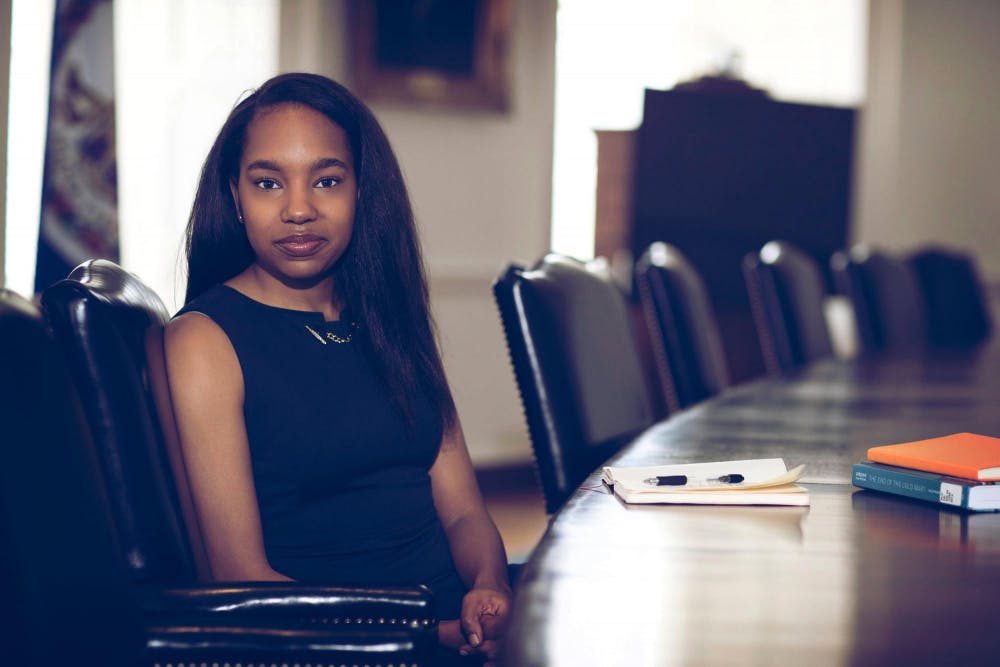On Monday morning, The Cavalier Daily Editorial Board published a piece that called on the Deans Working Group to subsume the role of the Advisory Committee on the Future of the Historic Landscape. However, I believe that the Advisory Committee is well positioned to create change. The Deans Working Group put serious thought into the creation of the Committee, and the extent of that foresight should not be underestimated. The success of Friday’s public input session should be attributed to the thoughtful leadership and collective expertise of the Advisory Committee.
The Deans Working Group was created immediately following the events of Aug. 11 and 12 to coordinate the University’s response. Since then the Working Group has defined its mission further by focusing on security, self-examination and scholarship. With such a broad mission, it is impossible for 17 members — 11 of whom are responsible for running their schools on a day to day basis — to tackle everything. So, in the midst of developing policy recommendations related to open flames, declaring the Lawn a “facility,” developing a pan-University climate survey and drafting a preliminary investment proposal, the Deans Working Group turned its eye to the symbols that surround us. Building names, statues, plaques and memorials are important and sometimes contentious features of our landscape. With hopes of drawing on the experience of a team of experts, the Deans Working Group made the decision to create an advisory committee that could tackle this issue with the energy and consideration that it requires.
According to the official website, “The Advisory Committee on the Future of the Historic Landscape at the University of Virginia shall formulate principles and make recommendations about the display of visible historic symbols on Grounds.”
To carry out this charge, the Deans Working Group nominated a group of diverse and remarkably talented individuals to serve on the Advisory Committee. Its membership includes prominent leaders in the University community including President Emeritus John T. Casteen III as co-chair, Elizabeth Meyer, Dean Emeritus of the Architecture School, the George Martin, Rector Emeritus of the Board of Visitors and Sheri Winston, the Interim Rotunda Manager. It also includes historians like Prof. Claudrena Harold as co-chair and Prof. Gary Gallagher, who have more than 40 years of combined academic experience in interpreting the historic landscape. Finally, the composition of the Committee was designed with increased student representation in mind. The working group includes three students, Attiya Latif, director of the Multicultural Student Center, Victoria Tucker, who is earning her doctorate in the Nursing School and Brendan Nigro, the current chair of the University Guide Service. Beyond their positions, every member of the Advisory Committee brings unique perspectives that have the power to inform their work in meaningful ways.
In addition to inviting experts from across the University to serve on the Advisory Committee, the Deans Working Group established a reporting structure and timeline to spur action. The official charge states, “The Committee should report to the Deans Working Group by Feb. 15, 2018.” This deadline was chosen in collaboration with the co-chairs of the Advisory Committee to ensure that the Deans Working Group would have the information in advance of the February Board of Visitors meeting. The February meeting is critical because it is the last regular meeting of this academic year and could be the last opportunity for the Deans Working Group to address the board before June.
There are certainly lessons to be learned from the most recent public input session. There was limited student outreach and that was reflected in the low student turnout. I will also acknowledge that there was minimal attendance by members (or proxies) of the Deans Working Group. As stated in Dean Goluboff’s most recent University-wide email, the Deans Working Group will continue to conduct outreach efforts into the spring semester. I expect that future events will find ways to address these challenges.
As we all know from our work in student organizations, delegation can be a powerful tool. Committees can can help us to achieve things that would be unimaginable if we tried to do it ourselves, or they can add to the confusion of our daily lives. I believe that committees can work, and the Advisory Committee is a stellar example. The Deans Working Group should not shy away from creating additional advisory committees in the future because they are a useful tool in expanding what the Working Group can achieve, and in increasing representation overall. The early success of the Advisory Committee is promising and reflects the thoughtful, deliberative process that the Deans Working Group has committed itself to.
Bryanna Miller is a fourth-year College student and the student member of the University’s Board of Visitors. She is also a member of the Deans Working Group.







